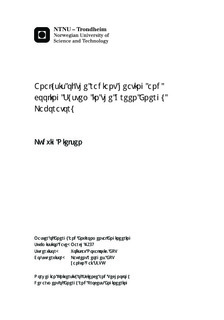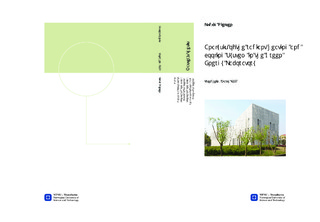| dc.description.abstract | Climate change and energy scarcity put higher requirements on the use of energy in the society today. Buildings are a major contributor to the energy use and much attention is placed on energy efficient solutions in building services. One promising technology is hydronic radiant heating systems (RHS), which use moderate temperature water that can be supplied efficiently by green energy sources such as heat pumps, solar collectors and district heating. However, complexity in design and operation often makes RHS less economically competitive to traditional heating systems. Proper design procedures and control strategies must be developed in order to make this an economic solution for the future. In this work a RHS installed at the Green Energy Laboratory (GEL) at the Shanghai Jiao Tong University (SJTU) is analyzed with the use of the simulation tool TRNSYS. A simulation model is built and validated against measurements from the actual system. The goal is to analyze the performance of the installed RHS for typical Chinese apartments in a Shanghai climate, with a focus on energy efficiency and thermal comfort. The heat source is assumed to be an air source heat pump. Simulations are performed for different control strategies, insulation levels, heat pump sizes and thermal storages. Results show that the installed RHS can supply the entire heat load for a typical building in Shanghai. It is shown that for colder climate a greater level of insulation is required, as the floor has a maximum heat output of about 50 W/m2 at a supply temperature of 45°C. On/off thermostat control of the flow to each zone is confirmed to be sufficient. A stable heat pump operation is achieved with a storage tank, as cycling time is increased. Simulations are performed on fan coil units (FCU) as an alternative heat emitting system and results show that total heat demand is reduced by 11 %. However, the heat pump performance is reduced due to higher supply temperatures and the total electricity consumptions for the two systems are similar. RHS is here affirmed as a good solution for Chinese residential buildings, but a more detailed analysis of thermal comfort and a financial analysis should be conducted to assess its market competitiveness. | |

